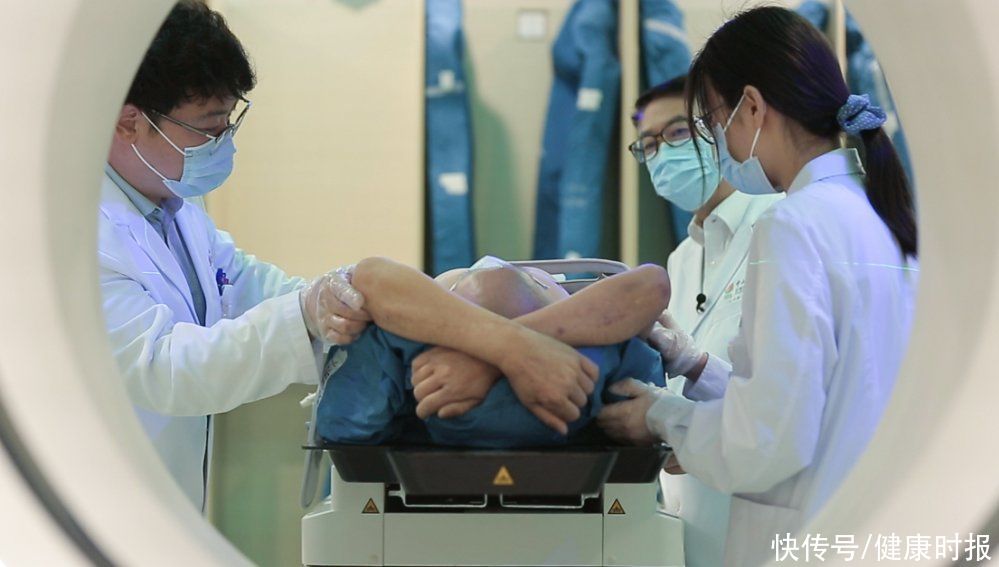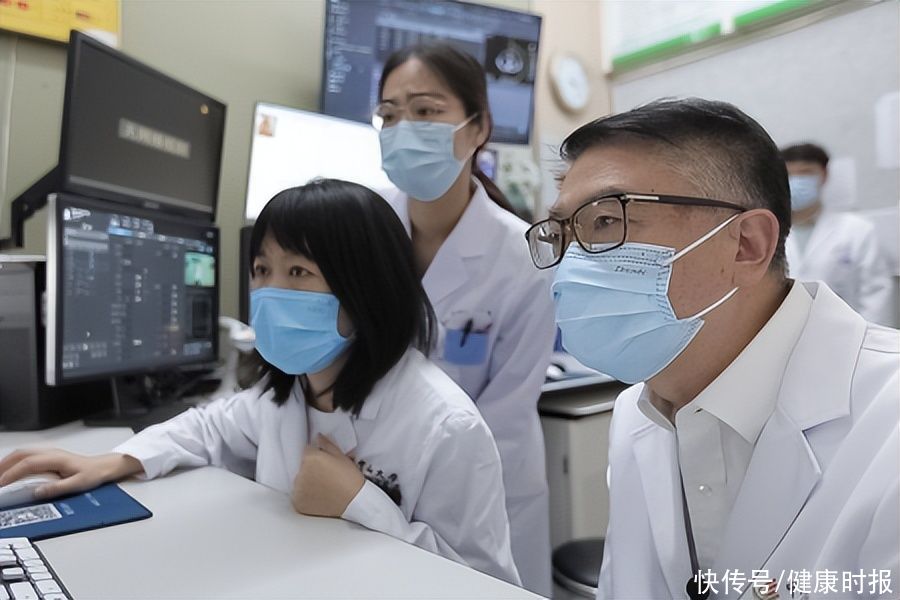(People’s Daily Health Client Wang Zhuo) “Capturing a dynamically changing tumor image is equivalent to chasing the protagonist with a spotlight on the stage, clearly presenting the dynamic changes of the protagonist. Ideal adaptive radiotherapy requires accurate images, Adapt to the changes in the position and shape of the tumor during treatment.” Chen Ming, director of the Radiotherapy Department of Sun Yat-sen University Cancer Center, described the tumor adaptive radiotherapy technology in an interview with the People’s Daily Health Client. He and his team completed the world’s first online adaptive radiotherapy for lung cancer patients based on uCT-ART technology, shortening the radiotherapy plan adjustment that originally took several days to 10 minutes and 45 seconds.
Integrated positioning, dynamic adjustment of radiotherapy plan with tumor changes
uCT-ART online adaptive radiotherapy technology was innovatively developed by United Imaging Medical. The “Satellite Navigation” is installed for the direct attack on the tumor. On the basis of using 4D-CT, the radiotherapy plan can be adjusted completely and adaptively online. The image quality is also innovated in an all-round way, and it has the application potential to cover the whole body cancer. The prevention and treatment center is the first clinical application in the treatment of lung cancer.
According to Chen Ming, for lung cancer patients, one radiotherapy cycle often requires 20 to 30 times of radiotherapy, which lasts for more than a month. “During radiotherapy, lung tumor shrinkage, changes in lung tissue with inflammation and atelectasis, cardiopulmonary physiological exercise, etc., will lead to changes in tumor shape, location, and size over time. Changes in the shape of organs will also cause changes in tumors.” He told the People’s Daily Health Client that the radiotherapy plan needs to be adjusted in time during radiotherapy.

On April 11, the team of Prof. Ming Chen, Director of the Department of Radiation Oncology, CUHK performed 4D uCT-ART (4D CT online self-timer) for lung cancer patients. adapted to radiotherapy). Photo courtesy of the interviewee
Chen Ming said: “The traditional linear accelerator has the problem that the image is not clear enough, and the ability to capture tumor displacement and deformation needs to be improved. If the tumor is localized on the imaging equipment, and then wait for the doctor to re-plan, the radiotherapy cycle of the patient will be longer.”
“However, this time, the integrated CT linear accelerator used in the treatment of lung cancer for the first time has a diagnostic level. With clear CT images, we can obtain high-definition CT images for patients before each radiotherapy, and formulate high-precision personalized treatment plans for patients online directly based on the CT images and lesion information of the day.” Chen Ming said, All operations can be solved at one time, doctors can adjust the plan more flexibly and dynamically in real time, and patients don’t have to rush to various departments, which greatly simplifies the patient’s medical treatment process.

Patient under treatment. Photo courtesy of the interviewee
Huang Xiaoyan, deputy director of the radiotherapy department, also said that United Imaging’s intelligent TPS has improved the accuracy of planning. “It can quickly, intelligently and accurately identify and delineate tumor lesions and normal organs. It can also provide online dose monitoring, making dose calculation more accurate and ensuring that patients receive the most optimal radiotherapy plan every time.”
Integration of medicine and engineering to create an integrated ecology of tumor diagnosis and treatment
“After six months of research and exploration, online adaptive radiotherapy for lung cancer is the best solution for CUHK Oncology and United Imaging. A key achievement in the linkage of medical industry, academia, research and medicine.” Chen Ming said that large medical institutions are willing to use domestic equipment, and only the combination of medicine and industry can continuously improve domestic equipment. Hospitals put forward needs and suggestions based on clinical reality, and enterprises carry out technological innovations and improvements based on this. Both parties cooperate with each other to form a virtuous circle and accelerate the transformation of innovation achievements.

Chen Ming and the team implement the treatment plan for the patient. Photo courtesy of the respondent
The United Imaging CT-linac 506c used in this uCT-ART online adaptive radiotherapy treatment is also the first domestic radiotherapy equipment introduced by Sun Yat-Sen University Cancer Center.
“The operation rate of the equipment has been nearly 100% since it was settled in 7 months. The image-guided mode based on diagnostic CT is higher than the previous CBCT, and the definition of soft tissue imaging is very high.” Lin Chengguang, chief technician of the radiotherapy department In particular, the software operation and various special functions are also more in line with the habits of Chinese doctors and fit the conditions of Chinese patients.
Since 2018, United Imaging and CUHK Oncology have cooperated closely in various fields, including Total-Body PET-CT uEXPLORER Explorer, 75cm ultra-large aperture magnetic resonance uMR Omega, integrated CT A series of large-scale clinical scientific research equipment such as the linear accelerator uRT-linac 506c have been launched one after another. The two parties are jointly building a diagnosis and treatment integrated innovative ecology covering precise diagnosis and treatment, precise immunotherapy, and precise radiotherapy linkage, and open up the whole process of prevention-diagnosis-treatment-rehabilitation.